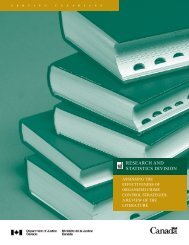National Threat Assessment 2008. Organised Crime - Politie
National Threat Assessment 2008. Organised Crime - Politie
National Threat Assessment 2008. Organised Crime - Politie
You also want an ePaper? Increase the reach of your titles
YUMPU automatically turns print PDFs into web optimized ePapers that Google loves.
terminal is returned and all traces are carefully wiped to prevent shop assistants<br />
from becoming suspicious. The modified chip and pin terminal can now copy<br />
the customer’s magnetic strip and record his or her pin code at the same time.<br />
The data are stored on a printed circuit board that is installed in the terminal.<br />
After a few days the skimming equipment is removed using the same procedure.<br />
The printed circuit board with the customers’ details is read by a computer and<br />
the details are sent abroad via the Internet or by text message (SMS). In the<br />
other country the data are copied onto the blank magnetic strip of a card,<br />
after which the criminals can start cashing in.<br />
4.7.3 Scale<br />
In 2003 and 2004 Dutch banks fitted anti-skimming equipment to their cash<br />
machines, such as a plastic front over the machine’s card insert slot. As a result,<br />
the number of skimming incidents dropped dramatically in 2005. However, even<br />
though skimming had disappeared almost completely in the Netherlands in<br />
2005, new reports were received in 2006. These reports mostly involved retail<br />
chains such as garden centres or DIY stores, but the ticket machines at train<br />
stations were also targeted. The number of private individuals who fall victim<br />
to these skimming operations varies between several dozen and hundreds. The<br />
organisation handling the electronic money transfers in the Netherlands issued<br />
a total of 15 warnings in 2005 and 70 warnings in 2006. This figure had already<br />
risen to 175 in the first nine months of 2007.<br />
4.7.4 Criminal organisation<br />
International offender groups operate using a cellular structure, whereby they<br />
usually target Europe. The offenders mainly come from Romania and, to a lesser<br />
extent, Bulgaria. All of the cells are linked to a single organisation in Romania.<br />
The hierarchy of the organisation is strict, with various roles and responsibilities<br />
such as intermediaries, technicians, people who carry out preliminary<br />
reconnaissance, burglars, people who install skimming equipment and others<br />
who remove it, and finally the cashers who use the stolen pin codes to get<br />
money abroad. The groups are highly specialised, especially in ICT, and there are<br />
no indications of involvement in other criminal activities. In the 14 most recent<br />
skimming cases a total of 30 people were arrested, 22 of whom came from<br />
Romania, three from Bulgaria and two from the Netherlands.<br />
chapter 4 – Supraregional property crime<br />
173








